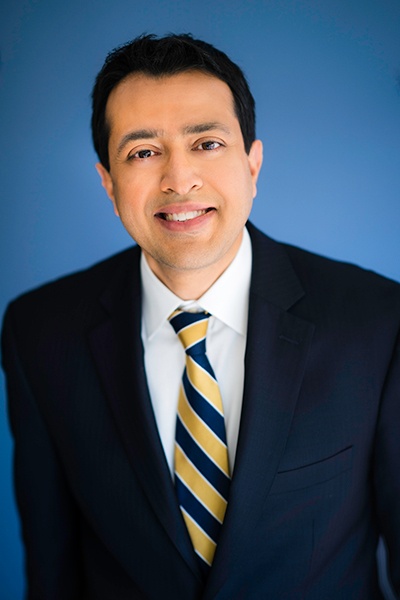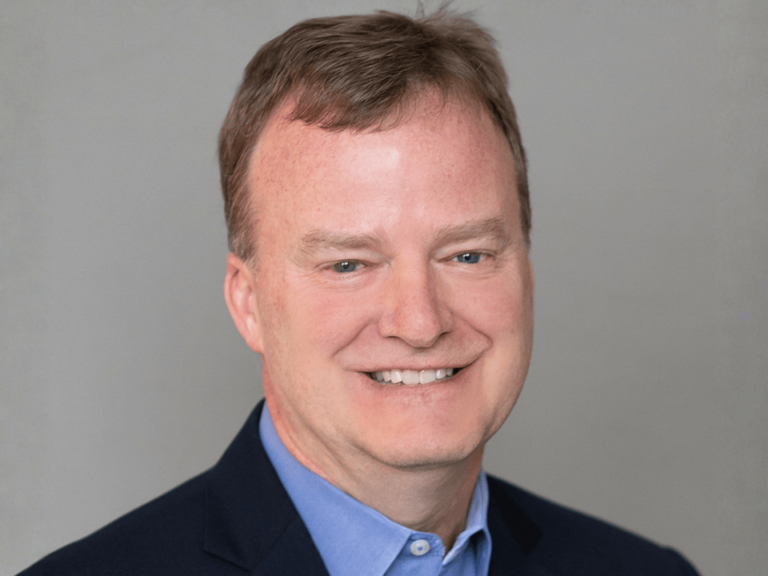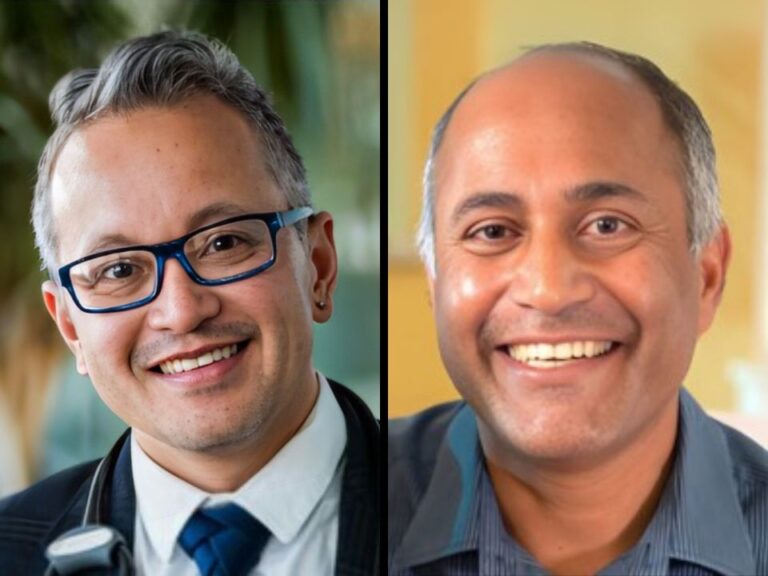The United States has the worst health outcomes of any high-income nation—lagging behind on health status indicators including mortality, fertility, and morbidity—and recent rulings by Texas district judges against preventive services and mifepristone would widen that gap, experts say.
These decisions were made a week apart in the District Court of the Northern District of Texas by judges sympathetic to far-right causes:
- In a March 30 ruling, Judge Reed O’Connor stopped the federal agencies from enforcing a critical provision of the Affordable Care Act that requires no cost-sharing for high-value preventive services, jeopardizing access to screening for cancer and other diseases (The Cancer Letter, March 31, 2023).
- In a separate ruling April 7, Judge Matthew Kacsmaryk invalidated FDA approval for one of two drugs used in medical abortions—mifepristone, which has been on the market for 23 years—to ensure that “women and girls are protected from unnecessary harm” by a drug approved based on “incomplete and potentially misleading” FDA data.
“It’s a different type of threat. Here I think it’s more ideological and I think that is really what the concern is for many people,” said Anand Parekh, chief medical advisor for the Bipartisan Policy Center, a non-profit think tank that works with policymakers across party lines to craft legislation. “[The plaintiffs are] essentially using the legal system to question procedural issues and have found judges who are friendly to their arguments.
“We obviously know that mifepristone is safe and effective. Millions of women have taken this medication over the last 20 years,” said Parekh, who served as assistant secretary and deputy assistant secretary of the Department of Human and Health Services for a decade before joining BPC.
“I would be very surprised if the Supreme Court upheld this verdict just because of the institutional authority of the Food and Drug Administration as well as the precedent that this could set.”
The U.S. Court of Appeals for the Fifth Circuit declined to uphold part of Kacsmaryk’s ruling in an order April 12. A guest editorial by Ned Sharpless, former acting FDA commissioner and NCI director, that addresses the ramifications of Kacsmaryk’s ruling appears here.
If Congress doesn’t restore the authority of the U.S. Preventive Services Task Force over mandatory coverage of essential preventive services, the consequences of losing access to these services are likely to become visible at the population level, Parekh said.
“The research has shown that, in particular for Hispanic populations and African-American populations, with respect to colon cancer screenings, colonoscopy rates and breast cancer screening, mammograms, that because of this ACA policy, it has led to significant increases in uptake in both of those patient populations for both of these cancer screenings,” Parekh said. “I would be particularly worried about cancer screening and cancer deaths, because at the end of the day, many of these high-value services, they actually don’t cost a lot of money to employers and insurers.
“But in the cases of many cancer screenings—you think about CT scans for lung cancer screenings, think about colonoscopies for colon cancer screening, mammograms and others for breast cancer screening—you could envision that some insurers and employers may re-institute cost sharing.”
Americans need to adopt a culture of prevention—significant racial, geographic, and economic disparities notwithstanding, Parekh said.
“Much of what afflicts our nation are preventable diseases and I think the policies today that are being questioned in many ways add to that culture of prevention, and that’s why it’s so important that we’re discussing this issue,” Parekh said.
“I think we’ll probably enter a little bit of a waiting period, and there’ll be a waiting game in terms of the final resolution of these cases. But in the interim, educating the public, educating patients, ensuring that they have access to the services, increasing uptake rates, will all be critical.”
Parekh spoke with Matthew Ong, associate editor of The Cancer Letter.
This conversation is also available as a video.
Matthew Ong: Dr. Parekh, thank you so much for taking the time to speak with us. We’re here to talk about two consequential rulings coming out of the district court for the Northern District of Texas.
As you know, we have Judge Reed O’Connor invalidating the USPSTF’s authority to issue legally binding recommendations. And Judge Matthew Kacsmaryk’s ruling that challenges the FDA scientific review process and approval authority. Do you want to start off by talking about the political landscape and the forces that might be influencing these decisions, and what that really means for evidence-based care in the United States?
Anand Parekh: Sure, happy to do so. I think in both of these instances, the plaintiffs obviously have a specific point of view, and they are essentially using the legal system to question procedural issues, and have found judges who are friendly to their arguments, to not only weigh in with a verdict that is supportive of them, but to apply the remedy nationwide.
And I think we’ve seen that in both of these instances.
In terms of evidence-based care and standard of care, there have always been threats to evidence-based care in this country. For example, we still overuse low-value clinical preventive services in this country, and much of that is driven by financial threats.
But here, it’s a different type of threat. Here I think it’s more ideological, and I think that is really what the concern is for many people.
And experts have said that the Supreme Court is likely to either uphold or allow the O’Connor ruling to stand. Well, specifically with regards to USPSTF and PrEP, do you agree with that? What do you think the likely outcome would be also for Kacsmaryk’s ruling?
AP: Well, I’ll start by saying I’m not a lawyer, so I really can’t weigh in on what ultimately may be the verdict.
I will say that I think I could see judges looking at the Appointment Clause of the U.S. Constitution and noting the discrepancy there, if you will, of these independent task force members not being appointed by the president and confirmed by the Senate.
And so, that could be an issue.
The violation against the Religious Freedom Restoration Act, I think that’s highly discriminatory against individuals at risk for HIV, but you never know with the judges and the justices who will review the case.
Finally, in the Kacsmaryk case, I would be very surprised if the Supreme Court upheld this verdict just because of the institutional authority of the Food and Drug Administration as well as the precedent that this could set.
We obviously know that mifepristone is safe and effective. Millions of women have taken this medication over the last 20 years.
So, I would hope—and I would think—that the court would not affirm the current decision.
You were with HHS for a long time. What do you think HHS can do with regards to the ruling on the taskforce and its recommendations?
AP: I think HHS really has sort of limited ability at this point.
Congress would need to step in, which Congress could do, with a simple one- or two-sentence fix, essentially establishing the authority of the Secretary of Health and Human Services over the U.S. Preventive Service Task Force process, yet we know how difficult it is for Congress to weigh in on these issues for a number of reasons.
Sharing stories about the importance of these services and why it’s so important to ensure that Americans have access to these services to save lives and enhance quality of life and ensure that what we spend on health is, if not cost saving, cost-effective.
In terms of what the department can do, there is a broader issue here, much broader than the court case, that the department needs to continue to focus on. These policies were meant to increase uptake of high-value clinical preventive services, and in many cases, they have done that.
But even current uptake rates of, let’s say, cancer screenings or cardiovascular screenings or mental health screenings or immunizations, uptake rates are still suboptimal. They’re in the 40, 50, 60% range when we really want them in the 70, 80, 90% range to save as many lives as possible.
So, I think while we enter this waiting period for the court ruling, which could take months, which could take years—I think Health and Human Services should think about this more broadly—how do we better educate patients in terms of ensuring that they’re up to date with clinical preventive services?
How do we make it more convenient for patients? How do we make sure that providers are accountable, have the incentives to ensure that these services are provided?
Obviously, there are other issues, and cost is certainly an issue, and I think that gets at the heart of the USPSTF policy, but there are other aspects of this that, while we wait on these particular cases, we need to work on to increase uptake of high value clinical preventive services in this country.
To your knowledge, is the Kacsmaryk ruling of mifepristone the first time that a court has ordered the removal of an FDA-approved drug against FDA’s advice?
AP: I think you’re right. I think it’s precedent-setting. I can’t think of another analogous situation.
And I think that the even broader concern here is if this were to stand, could this be precedent-setting? Any regulatory decision that the FDA makes takes into account multiple procedural steps.
So, you can imagine if there’s an individual out there—and some of this is subjective—that doesn’t agree with a particular procedural step and they question it and a friendly judge agrees with it, you could imagine that the entire drug approval process could be set or put into chaos and so this could impact any kind of drug approval process. And I think that is also the broader concern here given these rulings.
So, you think that there would be a greater chance that something like this will open the door to or invite more lawsuits and political pressure in favor of judicial intervention in FDA’s processes, or, some might say, incursions into the agency’s authority to make these decisions. Is there anything we can learn from history with regards to this?
AP: Well, I will just say that I think it is possible, and I think that’s part of the concern here. If there were obvious issues with the FDA’s process it’s one thing, but here we’re talking with respect to mifepristone, again, for 20 years, a drug that is been deemed safe and efficacious—and real-world evidence has also drawn that and found that to be true, that this is a safe and effective drug and no corners were cut.
And this is a position the FDA has held through Republican and Democratic administrations, through scientific experts who have come and gone. Regardless of the political winds, the evidence has been there, and I think that’s why you’ve seen a consistent decision.
Going back to preventive services, we know it doesn’t really cost a lot of money for insurers to cover some of these high-value services—cancer screening, for instance—but some former members of the task force have publicly discussed the challenge of achieving parity in coverage, remarking that first-dollar coverage has led to increased deductibles or copays for non-preventive services.
Is this a systemic problem, to your knowledge? And does full coverage for preventive services actually result in other forms of financial burden?
AP: I think it’s a really good question. I don’t know the answer myself, but I do think that inquiries need to be made.
And I think the question that you’re raising is, are insurance companies, given that cost-sharing has been eliminated for preventive services, are they making it up in the form of increased premiums, increased deductibles, increased cost-sharing for non-preventive services?
And ultimately, is there still a financial burden for the patient, but just in a different spot?
And I think that that’s an important question to be asked and one that deserves some research.
Minority communities as well as limited access, low-resource individuals, including in rural areas, are at greatest risk of losing access to preventive services based on research if insurance providers reinstate cost sharing.
What are some concrete examples of communities in which lower uptake of and adherence to, say, cancer screening guidelines, as a result of these financial disincentives, would be detrimental in?
AP: That’s an important question. The most concrete examples that I can think of, the research has shown that, in particular for Hispanic populations and African-American populations with respect to colon cancer screenings, colonoscopy rates and breast cancer screening, mammograms, that because of this ACA policy, it has led to significant increases in uptake in both of those patient populations for both of these cancer screenings.
In general, those who are more financially vulnerable have benefited. I mean, that is no surprise, that’s really the reason for the policy, but those who are more financially vulnerable have benefited more, and we’ve seen more increased uptake rate.
But there are concrete examples like that, particularly for minority communities where there have been cancer screening disparity rates, for that disparity gap to close because of this important policy.
What is the Bipartisan Policy Center and the think tank community working on in response to these rulings?
AP: Well, I think the role of the Bipartisan Policy Center is really to educate and have dialogue amongst both sides of the aisle and bring both sides together on critical issues.
And I think in this case, it is really to educate both sides of the aisle on the health issues here at play, the potential negative health ramifications if the current court case decisions stay. And I think the Bipartisan Policy Center will continue to do that.
I think we all have a role here. Healthcare professionals have a role in continuing to provide evidence-based services, and particularly on this topic, high-value clinical preventive services.
I think sharing stories about the importance of these services and why it’s so important to ensure that Americans have access to these services to save lives and enhance quality of life and ensure that what we spend on health is, if not cost saving, cost-effective. I think all of that is important.
So, there’s really a role for everyone here. I think we’ll probably enter a little bit of a waiting period, and there’ll be a waiting game in terms of the final resolution of these cases. But in the interim, educating the public, educating patients, ensuring that they have access to the services, increasing uptake rates, will all be critical.
Did we miss anything in this conversation and do you have any other comments?
AP: I think overall, in general, when it comes to health in America, we need to build a culture of prevention. Much of what afflicts our nation are preventable diseases and I think the policies today that are being questioned in many ways add to that culture of prevention, and that’s why it’s so important that we’re discussing this issue.
But it’s really only through prevention that we can achieve a healthier nation. In many respects, we’re falling behind when you look at the most important indicators for health compared to our peer countries. We also have significant disparities as well, racial and geographic and economic.
And so again, sort of really embracing prevention clinically, embracing public health and embracing primary care. This is how we will improve population health in the United States, and what we’re talking about today is one small part of that.
Dr. Parekh, thanks again for speaking with us.
AP: Thanks for having me on.












